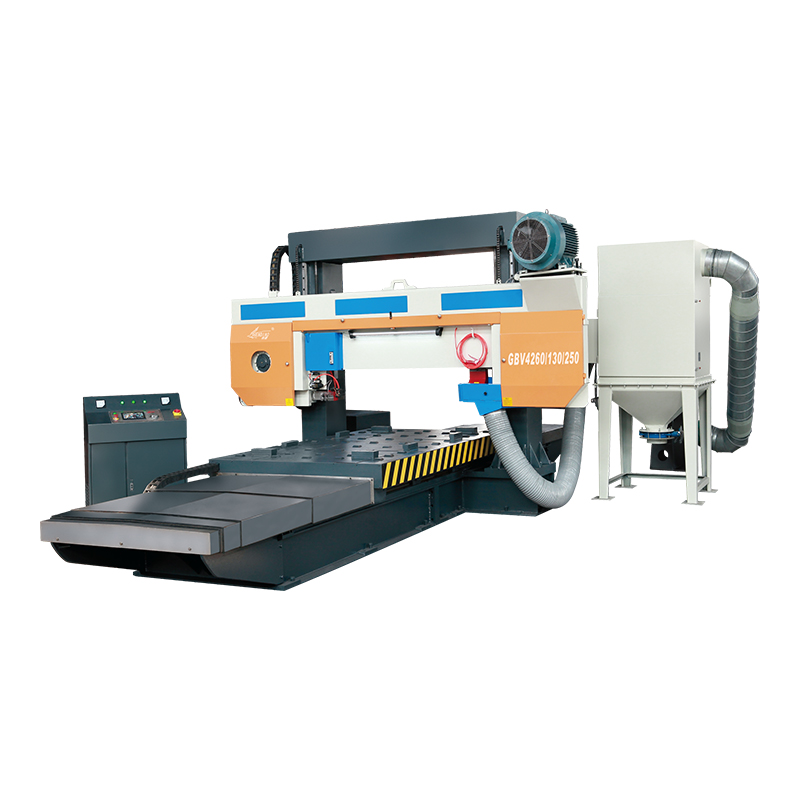Importance of Material Compatibility
Graphite is widely used in industries such as electronics, metallurgy, and energy storage due to its high thermal stability and electrical conductivity. Cutting graphite requires precision equipment capable of handling varying material properties. The adaptability of a graphite cutting band saw machine to different graphite densities and hardness levels directly affects cutting efficiency, surface quality, and tool life. Evaluating how such machines respond to diverse material characteristics is essential for manufacturers seeking suitable performance and reliability.

Understanding Graphite Density and Hardness Variations
Graphite materials vary significantly in density and hardness depending on production methods and intended applications.
- Low-density graphite: Typically softer and more porous, it is easier to cut but may generate more dust and require careful handling to prevent chipping.
- Medium-density graphite: Offers a balance between strength and machinability, providing consistent cutting performance under standard operational settings.
- High-density graphite: Denser and harder, requiring greater cutting force and precise control to avoid excessive wear on the saw blade and achieve smooth edges.
Machine Adaptability to Material Differences
The performance of a graphite cutting band saw machine in handling different materials depends on several key factors:
- Blade selection: Choosing appropriate blade tooth geometry, material, and thickness is crucial for adapting to varying graphite densities. Softer materials benefit from finer teeth to reduce chipping, while harder graphite requires reinforced blades to maintain stability.
- Cutting speed adjustment: Variable feed rates allow operators to optimize cutting speed according to the material’s density. Slower speeds are often necessary for high-density graphite to prevent overheating and blade wear.
- Vibration control: Dense or brittle graphite can amplify vibrations during cutting, which may affect surface finish. Machines with robust frames and damping systems are better suited for diverse material types.
Operational Considerations for Different Hardness Levels
Handling graphite of differing hardness presents operational challenges that must be addressed:
- Feed pressure regulation: High-density graphite requires consistent and controlled feed pressure to ensure smooth cuts without overloading the machine.
- Cooling or lubrication: Applying water or other cooling fluids helps reduce heat buildup and reduce wear, particularly when cutting harder or more abrasive graphite materials.
- Dust management: Softer graphite produces fine particles that can accumulate in the machine. Effective dust extraction systems enhance both safety and machine longevity.
Impact on Efficiency and Blade Longevity
Adaptability to material variations directly affects operational efficiency and the lifespan of cutting components:
- Blade wear rate: Machines optimized for different densities reduce premature blade dulling, maintaining cutting precision over time.
- Cycle time: Adjusting operational parameters for each material ensures on-time delivery while maintaining product quality.
- Consistent surface quality: Proper adaptation reduces edge chipping and produces smooth cuts, which is especially critical for high-value graphite components.
Optimizing Machines for Diverse Graphite Materials
The adaptability of a graphite cutting band saw machine to different material densities and hardness levels is vital for industrial applications. Factors such as blade selection, feed control, cutting speed, and vibration management play a decisive role in achieving efficient, precise, and safe cutting performance. By understanding material characteristics and adjusting operational parameters accordingly, manufacturers can improve machine longevity, reduce maintenance costs, and ensure consistent product quality. Investing in machines with high adaptability enhances productivity and positions companies to handle a broad range of graphite applications effectively.
